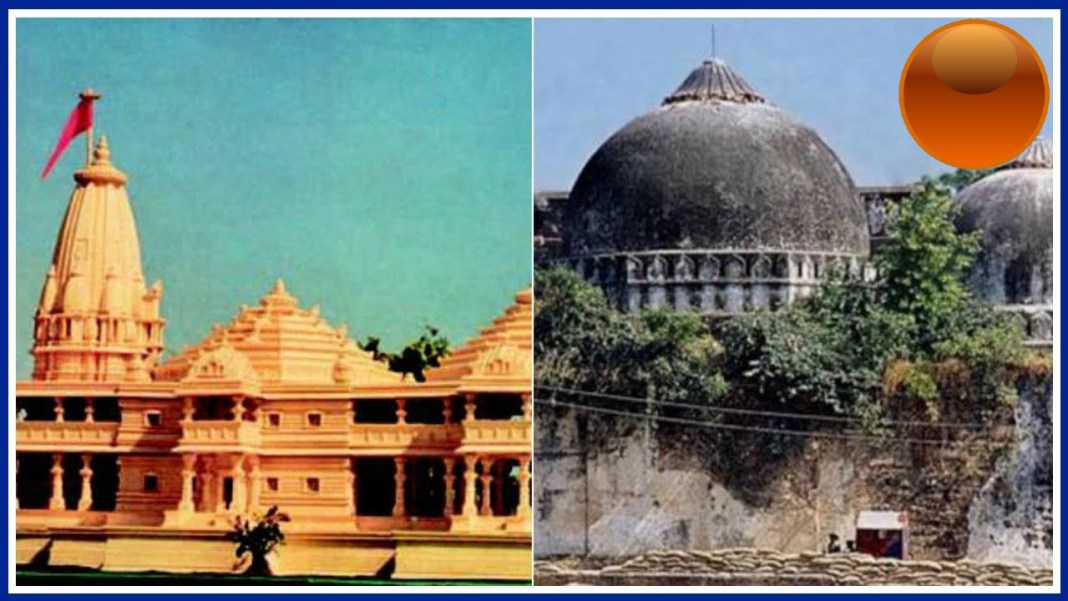It was not the reconstruction of Somnath Temple alone that kept first Prime Minister Jawaharlal Nehru and his deputy Sardar Ballabh Bhai Patel at loggerheads. Nehru found himself alone on the Ayodhya (Ram Janmabhoomi) issue too. The exchange of letters on the issue of Ram Lala idols emerged under the disputed domes (then called Babri Mosque) in 1949 between Nehru and Sardar Patel revealed Nehru’s desire to be seen as secular, as well as popular, and how Patel had a different opinion about removing the idols. Govind Ballabh Pant, the then chief minister of Uttar Pradesh, was not on Nehru’s side either. These sensational facts have come out in the public domain through the book Ayodhya — A Battleground, written by senior journalist Hemant Sharma. Being a journalist, Sharma has seen the changing contours of Indian politics from close quarters. In his book, the religious fervour took a political overtone when he describes the much-publicised conflict between Nehru and Patel in the most authentic manner. The latest edition of the book was published after the historical verdict of the Supreme Court, which solved all the mysteries and concoctions and gave way to the building of the promised Ram temple. But the way the author narrates the incidents and facts surrounding the controversies related to the structure, every account hands out a fresh perspective. The building of the Ram temple is not just a construction of a religious structure but a rebuilding of the nationalist character in every Indian, irrespective of their religious followings.
Ayodhya — A Battleground is an honest account of the epical conflict between politics, history, mystical facts and religious belief that kept the Indian belief intact through the damaged domes of the disputed Babri Masjid. The passion of author Hemant Sharma is reflected in every verse and sentence of this book, which keeps the reader engrossed till the end.
Lord Rama is not merely a religious symbol. He epitomises a cultural renaissance that was long overdue. And Ayodhya, His birthplace, can become the epicentre of a cultural and nationalist movement, much-needed for the revival of the nation’s conscience.
The writer has successfully touched a chord through his date-by-date and hour-by-hour detailing of events that unfolded before the awakening of patriotism that threaded the temple and belief of every Indian. The author calls himself a witness who continuously reported from Ayodhya since 1986. The book is mostly written in the first person. The author made sincere efforts to remain objective and factual, barring one or two occasions.
It is more of a biography of Ayodhya, which remained a battleground for centuries until the verdict by the Supreme Court on 9 November 2019 only to prove the universal truth about His birthplace, in other terms the location of His birthplace where a temple is being rebuilt.
The book gives the impression that Lord Rama’s Ayodhya is narrating the story of its own fate that made it a ground for a 5-century-long battle full of chaos, unrest, conspiracies, destruction, plundering etc.
Language: English
Paperback: 328 pages
ISBN-10: 9390356636
ISBN-13: 978-9390356638
Item Weight: 280 g
Dimensions: 14 x 2.08 x 21.6 cm
Country of Origin: India
Price: Rs 395 (available for Rs 296 here)
A peculiar point raised by author Sharma is that none of the political or religious campaigns for a temple in Ayodhya was ever spearheaded by residents of the town. It was always outsiders, the masses that thronged Ayodhya to keep it alive as a battleground.
The book is an account of the struggle for rebuilding the Ram Janmabhoomi temple at the no-longer-disputed site in Ayodhya. The author has narrated the chain of events as an eyewitness, especially from 1949 when idols emerged under the controversial three domes (of the Babri structure) to the legal battle triggered in civil courts to the backdoor and open discussions for a non-communally violent solution to the laying of the foundation stone of the temple to the nationwide temple movement by the RSS and its affiliates to the karseva movement at Ayodhya that culminated in the demolition of the three domes of Babri on 6 December 1992 to the incident of police firing at the crowd gathered to support the Ram temple, political gains and losses of parties to, finally, the closure of the political battle through a legal process objectively by the Supreme Court.
Sharma also accounts for the roles of politicians, bureaucrats, and religious and community leaders in independent India over the Ram temple in Ayodhya. He included rare letters written as official communication in 1949 amongst the then-Prime Minister Nehru, Home Minister Patel, Uttar Pradesh Chief Minister Govind B Pant and between the then-district magistrate of Faizabad (Ayodhya) KKK Nayar and chief secretary Bhagwan Sahai. The letters revealed the terse messages by Nayar to his boss Sahai and the state government clarifying that the situation was not good enough to remove idols kept at the then-disputed site.
Official communications during the ceremony to lay the foundation stone by Rajiv Gandhi, the prime minister in the duration 1984-1889, and RSS-VHP’s Ayodhya movement are included in the book too.
The book has 10 chapters detailing as many major episodes and an epilogue is added post-Supreme court verdict. Four chapters out of 10 are the most revealing; they narrate the game of power and politics surrounding the Ayodhya issue and expose the politics that impacted the whole country. The book shows the internal feud between parties and governments, the tug of war for better gains between the ruling and opposition parties. Chapter 2 explains “Power Politics behind the Game of Demolition”, Chapter 3 details Karseva, Chapter 4 is about “Laying the Foundation” and Chapter 6 gives an account of how idols appeared and what all transpired in that episode. Hemant Sharma wrote the book originally in Hindi. The English version has been published by Rupa Publications. The current edition has 300 pages. The author has made the introduction too lengthy, running into 22 pages.




You must log in to post a comment.